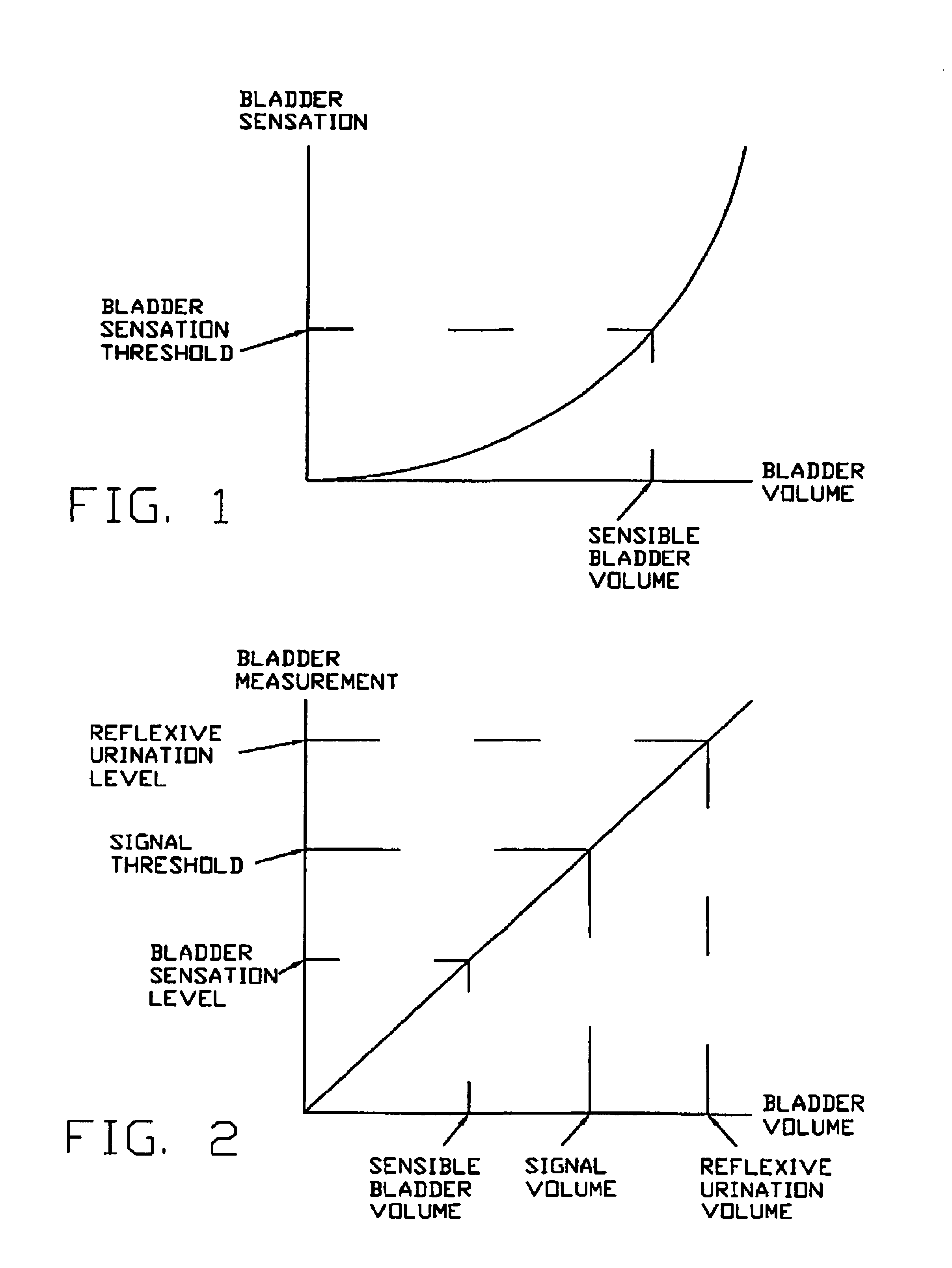Method of urinary continence training based on an objective measurement of the bladder
a training method and technology of the bladder, applied in the field of training methods based on an objective measurement of the bladder, can solve the problems of insufficient continence training of many children in these cultures, high labor intensity, and high labor intensity
- Summary
- Abstract
- Description
- Claims
- Application Information
AI Technical Summary
Problems solved by technology
Method used
Image
Examples
Embodiment Construction
[0018]For the purposes of this invention, “continence training” is defined as the process by which a caregiver, such as a parent, helps an incontinent child achieve voluntary control over, and independent management of, the timing and location of his or her urination and defecation. Thus, in this context, continence training, “continence”, and “continent”, refer to the child's ability to voluntarily retain bodily discharges and to voluntarily release these bodily discharges at an appropriate time and place, preferably into a sanitary waste receptacle, such as a toilet fixture. Generally, continence is not achieved in a single step. Instead, continence training often includes one or more of a number of important intermediate milestones. For example, the ability of the child to tell the caregiver that he or she is ready to urinate and / or defecate, the ability to voluntarily retain waste while awake, and the ability to urinate and defecate only in the designated receptacle are all comm...
PUM
 Login to View More
Login to View More Abstract
Description
Claims
Application Information
 Login to View More
Login to View More - R&D
- Intellectual Property
- Life Sciences
- Materials
- Tech Scout
- Unparalleled Data Quality
- Higher Quality Content
- 60% Fewer Hallucinations
Browse by: Latest US Patents, China's latest patents, Technical Efficacy Thesaurus, Application Domain, Technology Topic, Popular Technical Reports.
© 2025 PatSnap. All rights reserved.Legal|Privacy policy|Modern Slavery Act Transparency Statement|Sitemap|About US| Contact US: help@patsnap.com



